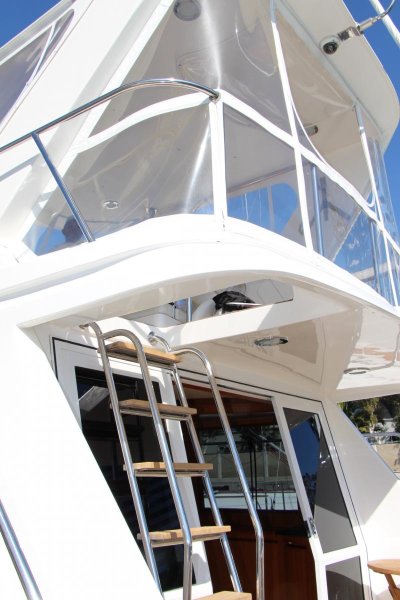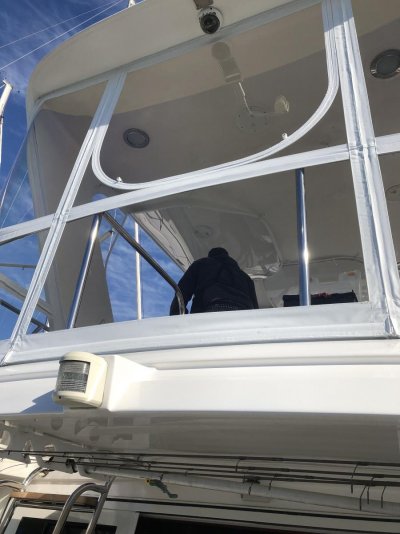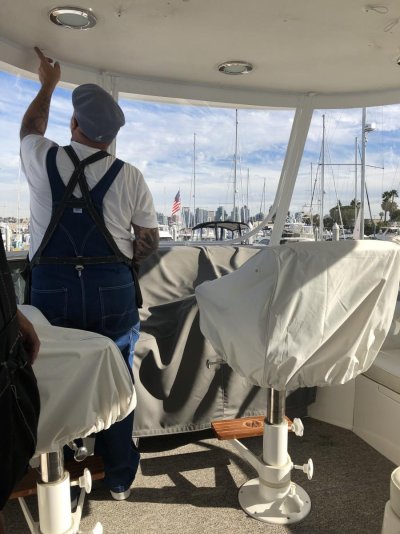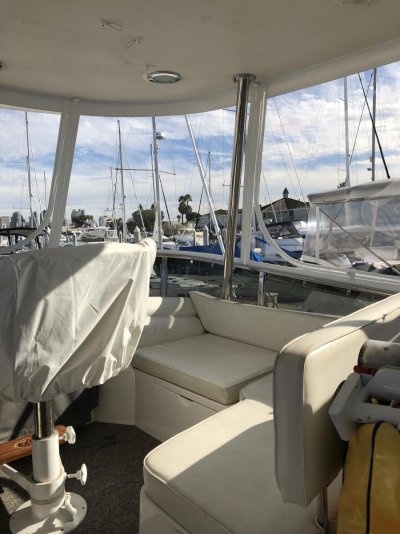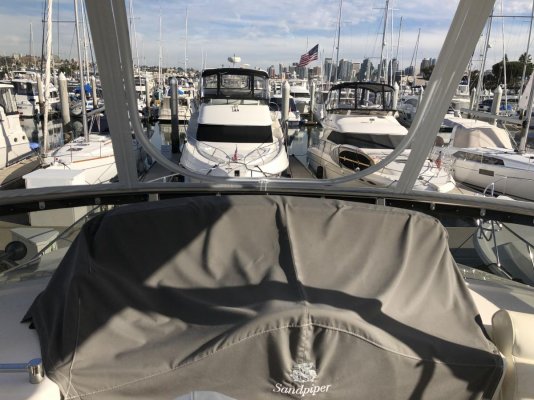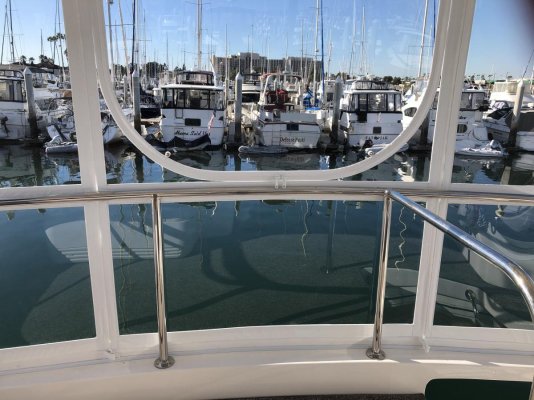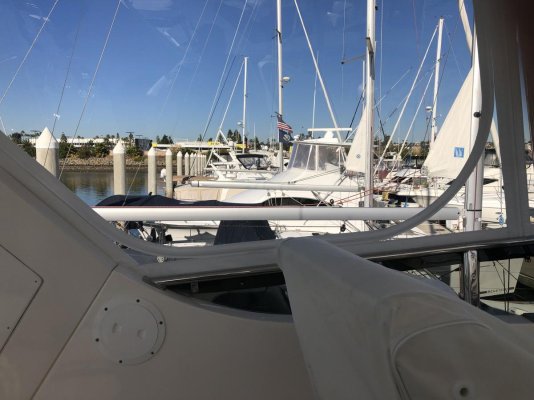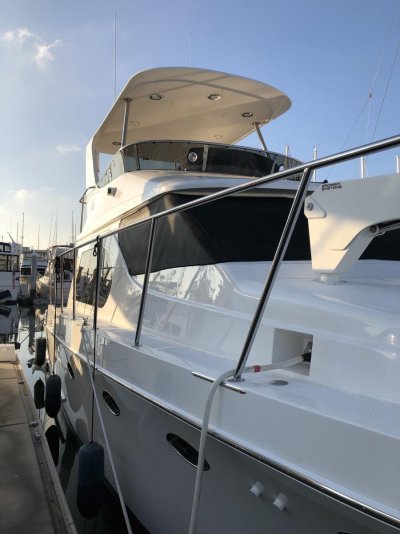You are using an out of date browser. It may not display this or other websites correctly.
You should upgrade or use an alternative browser.
You should upgrade or use an alternative browser.
Makralon vs. Lexan
- Thread starter Codger2
- Start date
The friendliest place on the web for anyone who enjoys boating.
If you have answers, please help by responding to the unanswered posts.
If you have answers, please help by responding to the unanswered posts.
Lou_tribal
Guru
These two are basically polycarbonate sheets from different manufacturer so similar. They are available in different grades.
Find below a link to comparison chart between makrolon grades and lexan grades
http://www.acplasticsinc.com/techSheets/Makrolon_Comparison.pdf
L
Find below a link to comparison chart between makrolon grades and lexan grades
http://www.acplasticsinc.com/techSheets/Makrolon_Comparison.pdf
L
I'm having a new flybridge surround (4 sides) installed next month and I'm wondering what the membership thinks is the best polycarbonate.
.040 Makralon or .060 lexan?
You'll want Makrolon AR2 (Abrasion resistant both sides).
This was at 8 years old in 2016. Still looks this good today. The only things that have ever touched it are IMAR and a fresh brand new microfiber rag each treatment...
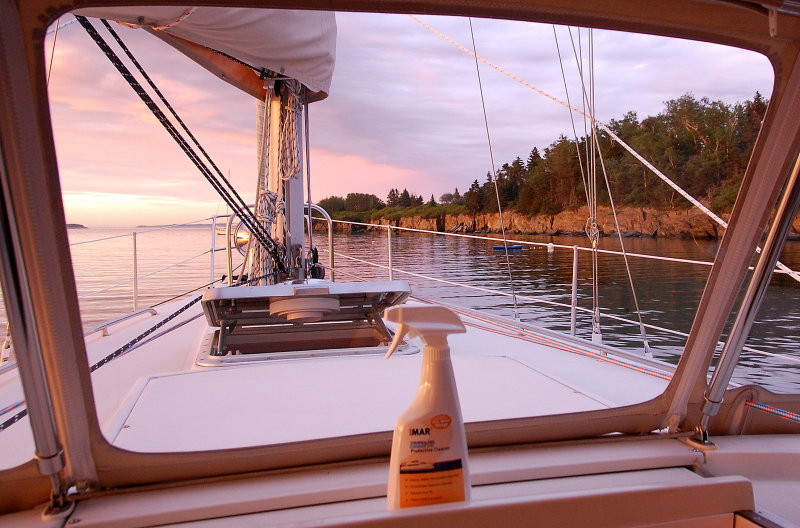
ranger58sb
Guru
You'll want Makrolon AR2 (Abrasion resistant both sides).
This was at 8 years old in 2016. Still looks this good today. The only things that have ever touched it are IMAR and a fresh brand new microfiber rag each treatment...
Nice! No sign of clouding or yellowing?
Our front panels are Makrolon, installed in 2009 and up 24/7/365, and two of the panels have started to cloud over this last year or so. Don't know what grade Makrolon it is, though; didn't at the time know enough about it to realize there are (were) various grades...
-Chris
sunchaser
Guru
- Joined
- Apr 9, 2008
- Messages
- 10,195
- Location
- usa
- Vessel Name
- sunchaser V
- Vessel Make
- DeFever 48 (sold)
Walt
Eighteen months ago we went with Margard (GE Lexan) coated on both sides. Stamoid fabric. So far so good. Yes the product is important, but the experience and skill of the installer trumps all.
I'd guess the less than perfect SoCal air, age and improper cleaning could lead to Lexan cloudiness after 9 years as you've experienced. We're on the boat, I'm sending you pictures today.
Eighteen months ago we went with Margard (GE Lexan) coated on both sides. Stamoid fabric. So far so good. Yes the product is important, but the experience and skill of the installer trumps all.
I'd guess the less than perfect SoCal air, age and improper cleaning could lead to Lexan cloudiness after 9 years as you've experienced. We're on the boat, I'm sending you pictures today.
Last edited:
Nice! No sign of clouding or yellowing?
Our front panels are Makrolon, installed in 2009 and up 24/7/365, and two of the panels have started to cloud over this last year or so. Don't know what grade Makrolon it is, though; didn't at the time know enough about it to realize there are (were) various grades...
-Chris
I used their basic offering to make hail shields for the large, flat sky lights on the house in Texas. It turned to a cloudy yellow at about the ten year mark. I changed to the AR product last year, which addresses abrasion but it's not clear if it enhances UV resistance.
Codger2
Guru
- Joined
- Oct 11, 2007
- Messages
- 6,691
- Location
- US
- Vessel Name
- Circuit Breaker
- Vessel Make
- 2021..22' Duffy Cuddy cabin
Thanks for all the info but I'm going to follow the suggestions from the guy who's making the enclosure. He recommends .060 Lexan Margard. He has used a lot of Makrolon in the past but had trouble with "yellowing" after 3 years. So, it's a coin toss! P.S. He's also the oldest canvas shop in my city!.040 Makralon or .060 lexan?


sunchaser
Guru
- Joined
- Apr 9, 2008
- Messages
- 10,195
- Location
- usa
- Vessel Name
- sunchaser V
- Vessel Make
- DeFever 48 (sold)
Thanks for all the info but I'm going to follow the suggestions from the guy who's making the enclosure. He recommends .060 Lexan Margard. He has used a lot of Makrolon in the past but had trouble with "yellowing" after 3 years. So, it's a coin toss! P.S. He's also the oldest canvas shop in my city!
Walt
Your guy sounds smart. Another TF member had trouble with Makrolon, to the point replacement was required after a year. But, each install and material selection is different. We chose two side coating Margard after looking at about 4 similar very nice Margard installs in our Marina done by the same guy.
Did you show my pictures to your guy showing the seams, zippers and fabric to Lexan joining?
ranger58sb
Guru
I changed to the AR product last year, which addresses abrasion but it's not clear if it enhances UV resistance.
The chart Lou posted in #2 suggests AR is also UV resistant. I can't tell if that means MORE resistant than the ones listed above it on the chart or not...
-Chris
twistedtree
Guru
I expect UV resistance would be very important. Also, I don't know if the materials are similar and whether this would even apply, but you commonly see yellowed/fogged headlight covers on cars. That's a result of using ammonia-based cleaners. Most people assume it's UV related, but it's 100% owner/user induced. It makes me wonder if yellowing of the lexan etc panels is similar....
ranger58sb
Guru
I expect UV resistance would be very important. Also, I don't know if the materials are similar and whether this would even apply, but you commonly see yellowed/fogged headlight covers on cars. That's a result of using ammonia-based cleaners. Most people assume it's UV related, but it's 100% owner/user induced. It makes me wonder if yellowing of the lexan etc panels is similar....
In our case, I think it's just age... especially since our clouding is starting near the bottom edges of the two panels that see the most consistent sunlight, and gradually working it's way north.
If it were from cleaning, I'd think it would be throughout each panel. And then I do (most of) the cleaning myself with water, Imar #301 and #302, microfiber cloths, etc.
I don't know what "grade" our Makrolon is...
-Chris
ranger58sb
Guru
Just to add a bit more info... I talked with our fabricator this morning, to get in his queue for some repair work sometime over the coming winter... and while we were at it, he mentioned another grade of Makrolon. He didn't have the name off-hand, so I rummaged around on the Covestro site, discovered there are about a bazillion different grades, but eventually found this:
https://www.sheets.covestro.com/~/m...ts/Download Center/Americas/BRO046_Marine.pdf
I suspect he was thinking or Makrolon Marine 5, which apparently comes in two gauges, .060" and .080".
-Chris
https://www.sheets.covestro.com/~/m...ts/Download Center/Americas/BRO046_Marine.pdf
I suspect he was thinking or Makrolon Marine 5, which apparently comes in two gauges, .060" and .080".
-Chris
sunchaser
Guru
- Joined
- Apr 9, 2008
- Messages
- 10,195
- Location
- usa
- Vessel Name
- sunchaser V
- Vessel Make
- DeFever 48 (sold)
I had coated lexan for ten years and still clear. IIRC it was 50 ga except for 30 ga at curved areas that eliminated frames .
By using laminating vs stitching, thicker Lexan can be pulled into pretty tight radius curves and minimize the cracking/crazing potential as thread ages. That is what our installer says anyway, and in our case he is so far correct.
Refugio, why would bending be expensive? It goes really fast if in the hands of a pro. I've watched it being done and no problem with time or materials.
For anyone with any interest, PM me your email and I'll send some close ups.
Last edited:
@sunchaser It’s bonding that’s expensive - not bending. In the PNW that’s a Barrett patent and they charge for rectangular sheets with no allowance to use leftover. For me, with triangular windows, it was an extra $2k over .060.
Harlen
Veteran Member
Makrolon Marine 5 is the new product that is able to be bent more but is also more expensive. I am having my flybridge enclosure redone and will be using both the Marine 5 and less expensive AR. My installer with twenty years of experience says he has had good results with Markolon in general and no issues with early yellowing.
Codger2
Guru
- Joined
- Oct 11, 2007
- Messages
- 6,691
- Location
- US
- Vessel Name
- Circuit Breaker
- Vessel Make
- 2021..22' Duffy Cuddy cabin
Just finished the job yesterday & am extremely pleased with the quality!Thanks for all the info but I'm going to follow the suggestions from the guy who's making the enclosure. He recommends .060 Lexan Margard.
Attachments
Last edited:
Sailor of Fortune
Guru
looks good Walt!
Comodave
Moderator Emeritus
- Joined
- Jul 2, 2015
- Messages
- 21,280
- Location
- Au Gres, MI
- Vessel Name
- Black Dog
- Vessel Make
- Formula 41PC
Looks very nice.
Similar threads
- Replies
- 7
- Views
- 409

